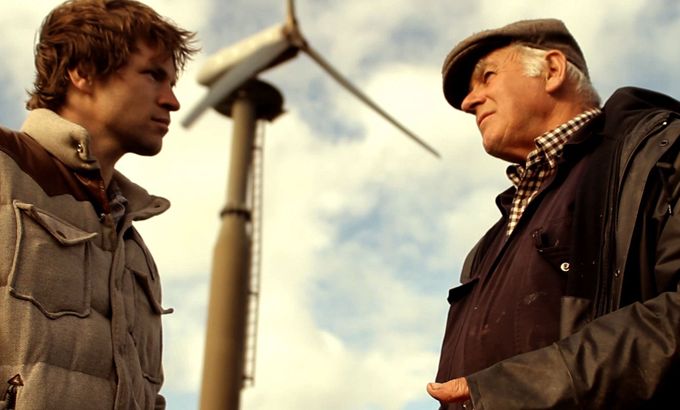
The Power of Rubbish & Abu Dhabi’s Masdar Plan
Turning Brazil’s waste into energy, keeping cool in New York, a skyscraper-free city in the UAE and waste-powered farms.
The Power of Rubbish
Brazil tackles its growing waste problem by turning a Sao Paolo landfill site into a source of power for the city.
Keep reading
list of 4 itemsWhy is Biden ratcheting up the trade war with China?
Ivorian cocoa farmers ‘barely survive’ while chocolate company profits soar
Singapore Airlines death: Is climate change making air turbulence worse?
With a population of nearly 20 million and counting, Sao Paolo is the largest city in Brazil and the eighth largest in the world. And as its population grows, so too does its waste.
For nearly three decades, the huge Bandeirantes landfill site took half of Sao Paulo’s rubbish. But now the site has been grassed over and given a new lease of life: as a source of power for the city.
The Landfill Gas to Energy Project based at Bandeirantes collects gases such as methane, released by decomposing rubbish, and turns them into biogas, which is used to generate electricity.
Since the project started in 2004, it is estimated that it has prevented the net release of 7.4 million tonnes of greenhouse gases.
White Roofs
An energy conservation project is cooling New York City’s roof tops with a simple paint job.
The bigger a city, the hotter it gets. In cities with more than a million inhabitants the temperature can be up to 12 degrees celsius higher than in smaller urban areas.
The extra energy needed to cool buildings in large cities is tremendous – up to five to 10 per cent of all electricity consumed during the summer months.
Much of the sunlight that reaches New York hits the city’s roofs, and the darker the roof the more heat it absorbs.
On a 90 degrees fahrenheit day, a black roof reaches a scorching 180 degrees fahrenheit, but a lick of specially designed white paint brings the heat down considerably, to 100 degrees fahrenheit.
By painting New York’s roof tops white, the White Roof Project aims to cool the city and save energy, all with a simple paint job
Abu Dhabi’s Masder Plan
A new skyscraper-free city in the United Arab Emirates is taking clean technology to heart.
Per capita, the United Arab Emirates has one of the highest energy consumption levels in the world. With air conditioning to cool the fierce heat, desalination plants to provide drinking water and a large oil and gas industry, carbon dioxide levels have doubled in the last 30 years.
But just a few kilometres away from downtown Abu Dhabi a very different kind of development is taking place. Free of skyscrapers and free of cars, Masdar City is a growing city of institutes, businesses, shops and homes, with clean technology at its heart.
Construction began in 2008, and when it finishes organisers hope the city will accommodate 90,000 people – 40,000 residents and 50,000 daily commuters.
Energy Farmer
earthrise visits a farm in Wales, that is powered by waste. Wyn Evans, a dairy farmer from Wales, has seen many changes on his farm over the past 40 years.
Milder winters, droughts, flash floods, and the erosion of the nearby coastline prompted him to think differently about the farm’s energy consumption – and potential.
Three decades ago, Wyn created a system which harnessed the methane produced by cow manure, and used to create fuel. Solar panels, a wind turbine and other green resources contribute up to 50 per cent of the energy needed to run the farm.
Russell Beard travels to Wales to meet Wyn, and find out what inspired him to become an ‘energy farmer’.